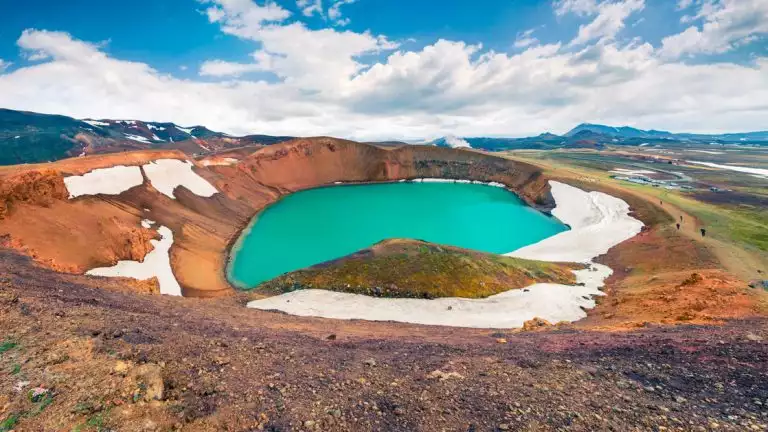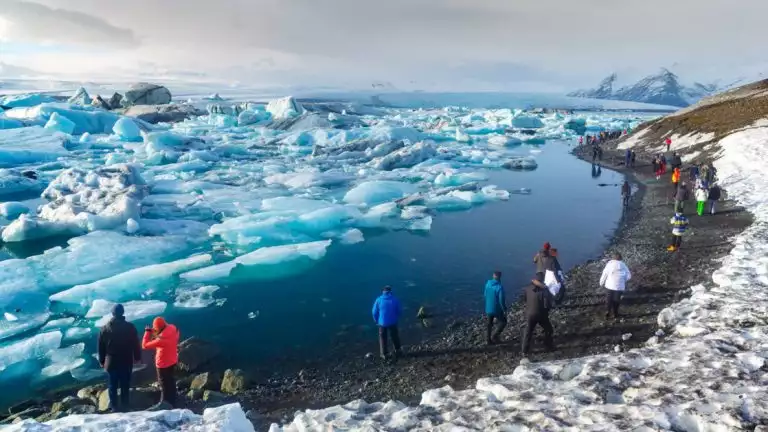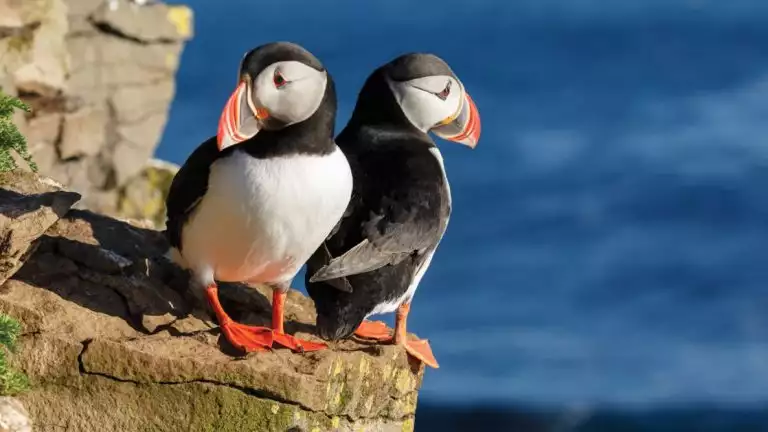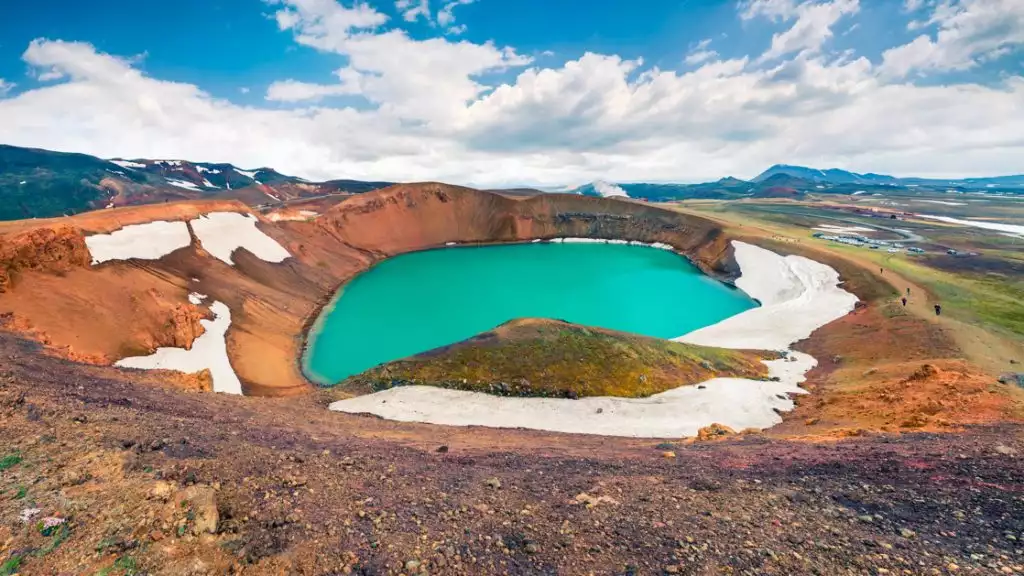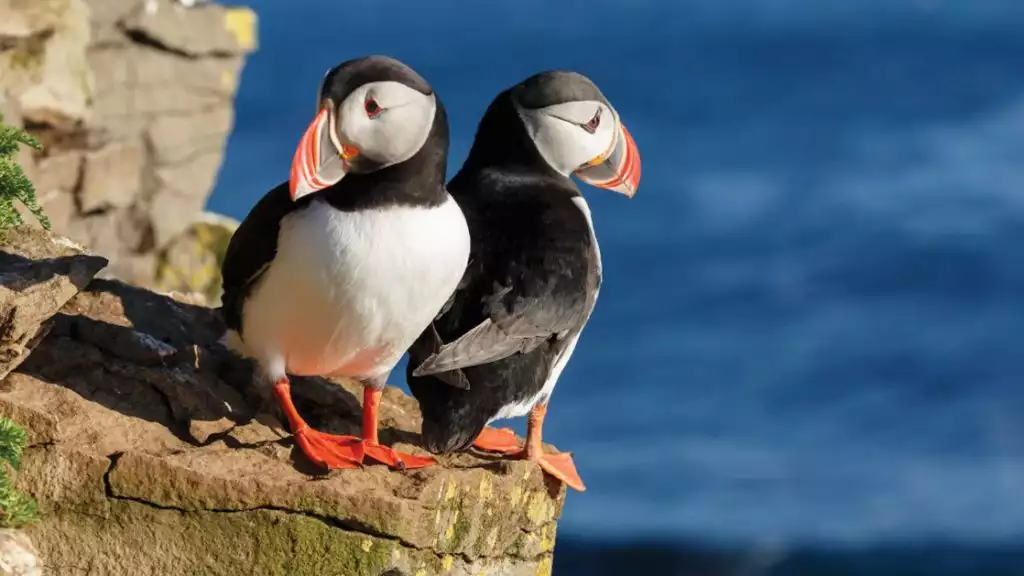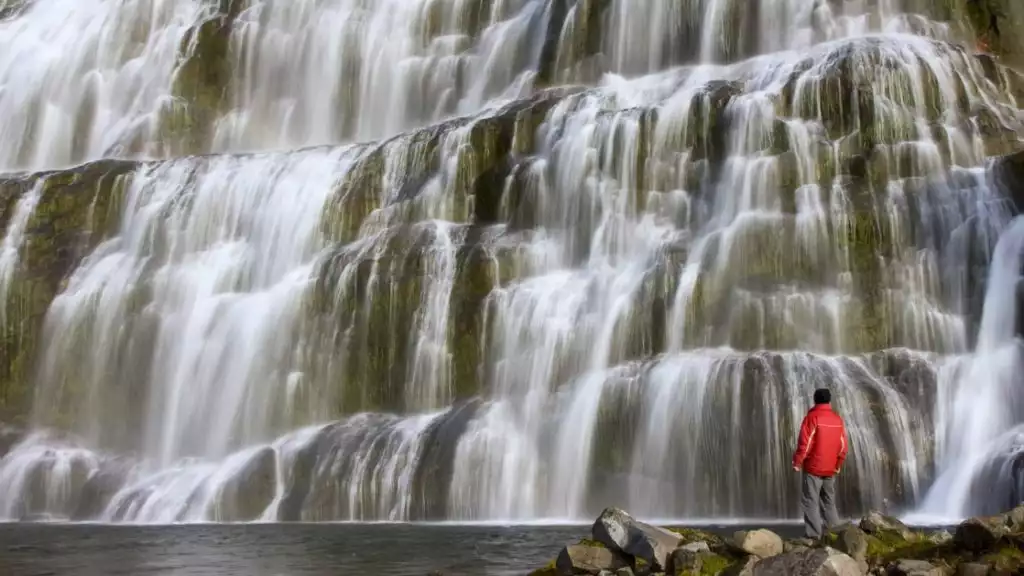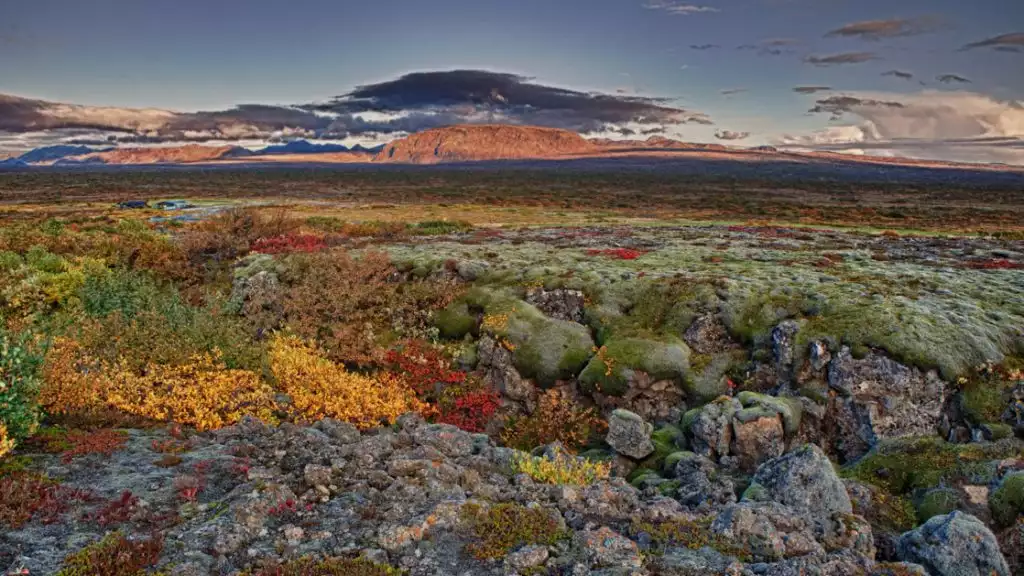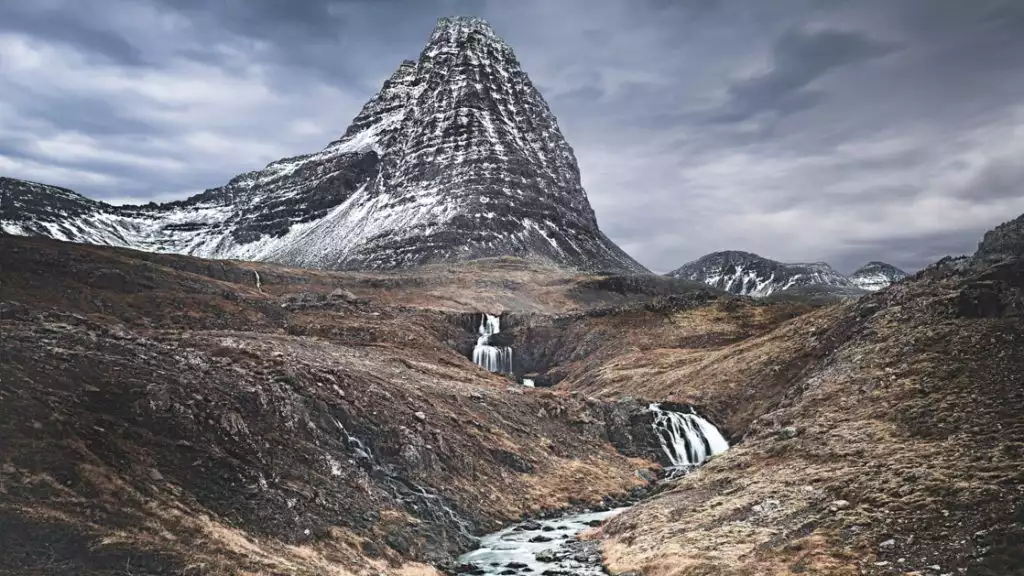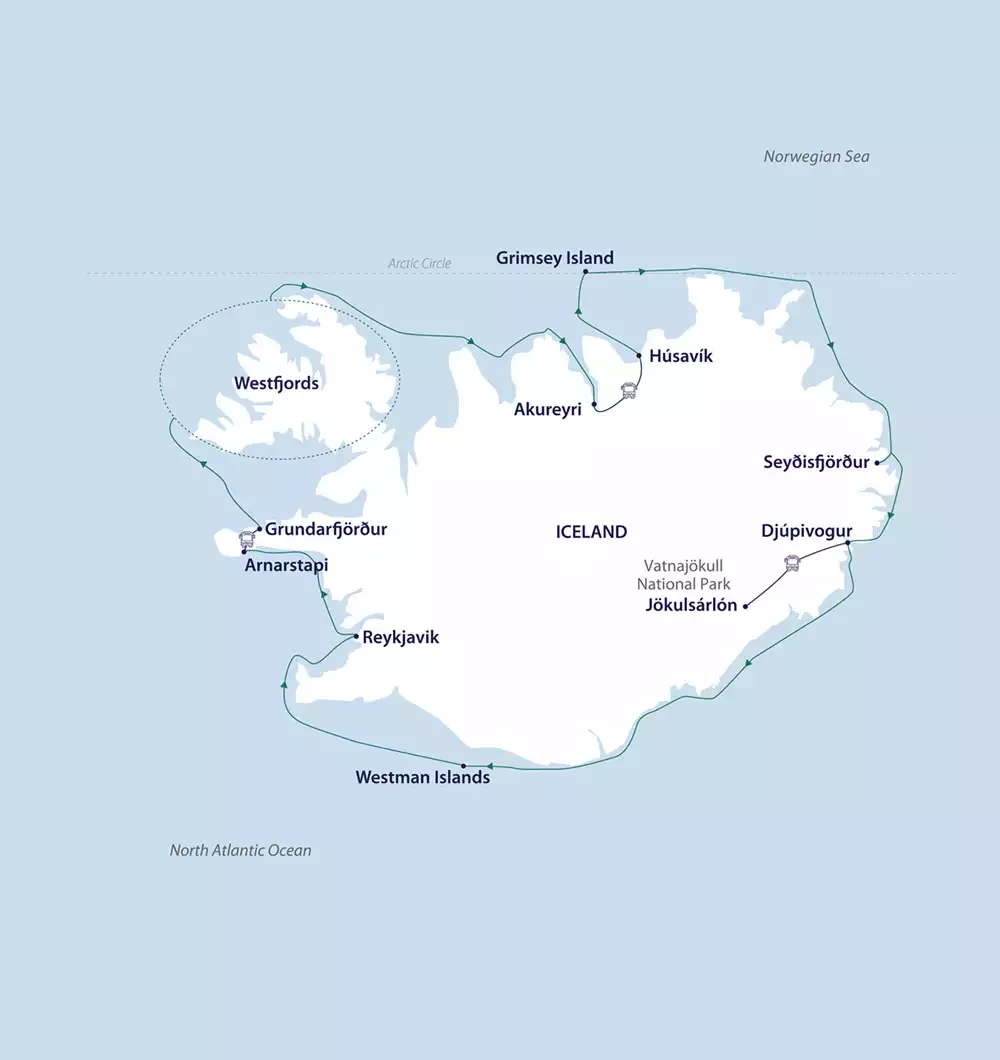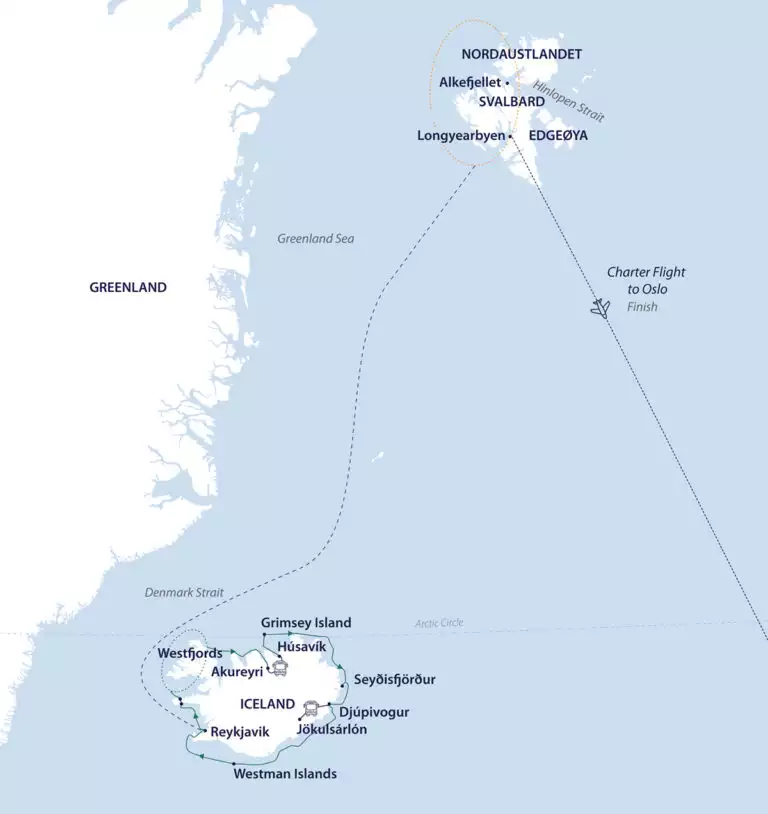Included
All airport transfers mentioned in the itinerary; one night’s hotel accommodation in Reykjavik on Day 1 (including breakfast on Day 2); group tour to visit Iceland’s famous Golden Circle prior to embarkation, on Day 2; charter flight from Longyearbyen to Oslo on Day 23; onboard accommodation during voyage including daily cabin service; all meals, snacks, tea and coffee during voyage; beer, house wine and soft drinks with dinner; Captain’s Welcome & Farewell reception including four-course dinner, house cocktails, house beer and wine, and non-alcoholic beverages; all shore excursions & Zodiac cruises; educational lectures and guiding services from expedition team; complimentary access to onboard expedition doctor and medical clinic (initial consult); a 3-in-1 waterproof polar expedition jacket; complimentary use of muck boots during the voyage; comprehensive pre-departure information; port surcharges, permits and landing fees; WiFi (where connection is possible); crew gratuities (suite guests only).
Exclusions
International or domestic flights, unless specified in the itinerary; transfers not mentioned in the itinerary; airport arrival or departure taxes; passport, visa and vaccination charges; travel insurance, emergency evacuation charges or personal insurance (required); hotels and meals not included in itinerary; optional excursions not included in the itinerary; optional activity surcharges; all items of a personal nature including but not limited to: alcoholic beverages and soft drinks (outside of dinner service), laundry services, personal clothing, medical expenses or phone charges; automatic crew gratuities of $15 per person, per day (non-suite guests) which may be removed or amended at the end of the cruise.
Payment & Cancellation
In order to confirm this trip, a nonrefundable deposit of $2,500 is required per person at time of booking (additional nonrefundable $250 deposit is required for optional activities). The balance of the trip price is due 90 days before the departure date. Special holiday payment and cancellation terms may apply. Guests who must cancel their trip for any reason must do so in writing. Standard cancellations are subject to the following per-person penalties, based on number of days prior to departure:
91 days or more – 100% of deposit
90 to 0 days – 100% of total trip cost
Terms & Conditions
This trip is subject to AdventureSmith Explorations Terms and Conditions. Please read this information carefully and call us if you have any questions. A Traveler Information Form, which includes a release of liability, must be completed and signed by all travelers. Your Adventure Specialist will send you a unique link to complete this form along with a packing list and extensive pre-departure and travel insurance information upon booking confirmation.
Arrival & Departure
The Arctic Wonders: Iceland & Spitsbergen cruise begins in Reykjavik, Iceland (KEF), and ends in Oslo, Norway (OSL). Plan flights to arrive to Reykjavik any time on Day 1, but we highly recommend arriving one day prior to your trip start date in case of any flight delay, cancellation or lost luggage issues. An arrival transfer to the group hotel is included on Day 1. Plan flights to depart Oslo no earlier than 12:00pm noon on disembarkation day. A group transfer from the pier to the airport is included following disembarkation. If you would like assistance with international flights, please visit our Booking Flights resource page.
Internal Flights
A group charter flight from Longyearbyen, Svalbard to Oslo, Norway is required on this trip’s itinerary and is included in the listed per-person cabin rates. The transfer from the ship to the airport for this charter flight is included. Luggage weight limits for the charter flight is 50lbs for a checked bag, carry-on bags must be under 10 inches by 18 inches by 22 inches (26 cm x 46 cm x 56 cm) with a max weight of 22lbs/10kg.
Activities
The Your Choice shore excursions listed in the itinerary are included, but your preferences must be selected at least 60 days prior to embarkation and cannot be amended after this time. If your selections are not received by this time, you will be allocated excursions by an automated system.
Birdwatching, walking, Zodiac cruising, photography tips, lectures, a polar plunge & all trips ashore are included in the rate. Various optional activities may be available, with per-person 2025 prices starting at: kayaking $690 depending on departure date. For the kayaking program, join 20 like-minded paddlers (in small groups of 10 per guide) to fully experience nature at its wildest. Please contact AdventureSmith for details on which activities are available on your specific departure date and to reserve space with your booking.
Room Configuration
Single travelers wishing to book a double-occupancy cabin may do so at a 50% supplement of the per-person listed rate in select cabins upon availability. Starting April of 2026, select double-occupancy cabins are available with no single supplement; inquire with your Adventure Specialist for details and availability. Solo travelers willing to share may be matched with a person of the same gender, and if the other cabin berth goes unsold, will only pay the standard double-occupancy rate.
Families & Children
Kids 8 years and older are welcomed aboard all departure dates. Children between 8-17 years of age must pay the adult price of the expedition.
Travel Insurance
A medical form for all travelers, signed by their doctor, is required for every departure. Comprehensive travel insurance is mandatory for this trip, with a minimum required coverage of $250,000 USD per person, covering medical, accident and repatriation/emergency evacuation, as well as baggage loss and cancellation or curtailment of holiday. In addition, we highly recommend our travelers protect their investment with travel insurance that includes trip cancellation and other benefits. Our partners at Travelex Insurance offer a variety of plans and policies to fit every trip and budget. For best value and coverage for pre-existing medical conditions, consider purchasing a policy at time of booking. Learn more about travel insurance or get a free quote.
Itinerary Notes
Read this itinerary as a guide only; the exact route and program varies according to ice, weather conditions, wildlife encountered and the captain’s discretion. Flexibility is the key to the success of any Arctic expedition.

